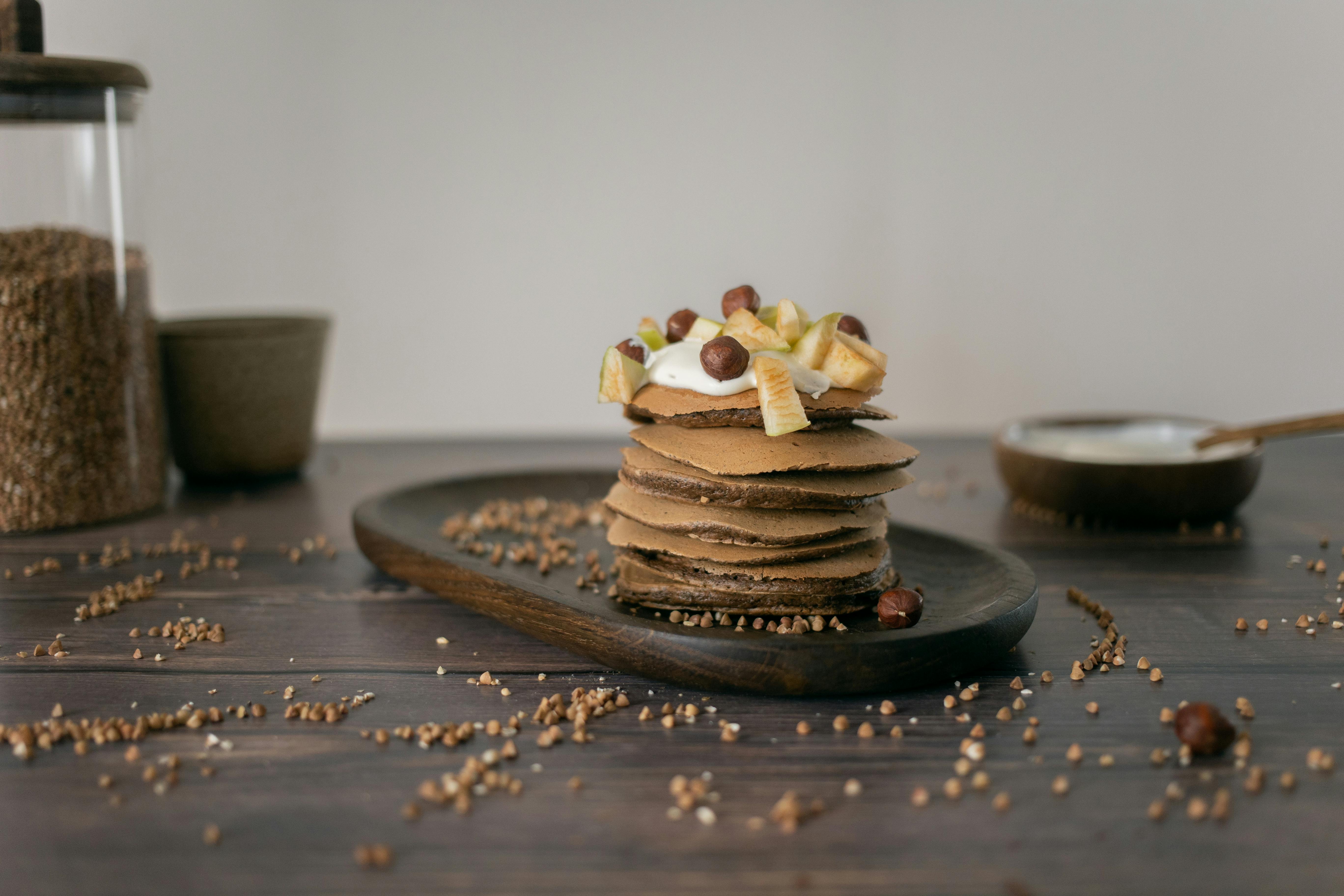A fruit cup is a convenient and nutritious snack that can easily fit into any diet. It is often made up of a variety of different fruits, such as apples, oranges, bananas, grapes, and more. But how many calories are in a typical fruit cup? This article will answer that question and provide some helpful information about the nutritional value of a fruit cup.A fruit cup is a type of dish that consists of a mixture of diced, chopped, or sliced fruits. It is usually served as a snack or dessert and can be made with any combination of fresh, canned, or frozen fruits. Fruit cups may also include additional ingredients such as yogurt, nuts, honey, granola and other sweeteners.
Fruit Cup
A fruit cup is a popular snack or side dish that typically contains a variety of fruits. It is often served as an appetizer or dessert and can be enjoyed by people of all ages. The most common types of fruits found in a fruit cup include apples, oranges, grapes, strawberries, pineapple, kiwi, and melon. Other types of fruit such as mangoes, bananas, and papayas can also be included depending on the preference of the person preparing the fruit cup. Fruits are typically cut into bite-sized pieces for easier consumption. Some people also choose to add other ingredients such as yogurt or granola to the fruit cup for added flavor and texture.
Fruit cups are a healthy and convenient snack option that can be enjoyed in many different ways. They can be eaten plain or with a dip such as yogurt or ice cream. They can also be used as part of a larger meal such as a salad or even served with some grilled meat for a delicious dinner option. Fruit cups are also great for kids who want to have something sweet but not too sugary like candy or cookies. They are also easy to transport and make great snacks while on the go.
Apple
An apple contains roughly 95 calories. Apples are a great source of dietary fiber, Vitamin C and Vitamin K. They also contain some calcium, iron, and vitamins A and E. Apples are low in calories and fat, making them a great snack for those trying to watch their weight. Eating apples can help reduce cholesterol levels, improve digestion and reduce the risk of certain diseases such as diabetes and heart disease.
Banana
A banana contains around 105 calories. Bananas are packed with essential nutrients such as potassium, which helps maintain blood pressure levels. They also contain Vitamin B6, Vitamin C, magnesium and manganese. Eating bananas can help boost energy levels and improve your mood due to their high level of natural sugars. They are also a great source of dietary fiber which helps with digestion.
Orange
An orange contains approximately 60-70 calories depending on its size. Oranges are full of Vitamin C which helps boost the immune system and keep skin looking healthy. They also contain small amounts of other vital vitamins including calcium, magnesium, phosphorus and potassium. Eating oranges can help reduce bad cholesterol levels as well as promote healthy digestion.
Grapefruit
A grapefruit contains approximately 40-50 calories depending on its size. Grapefruits are packed with Vitamin C which is essential for maintaining a healthy immune system. They also contain small amounts of other key vitamins including calcium, magnesium, phosphorus and potassium which help maintain strong bones and teeth. Eating grapefruits can help lower bad cholesterol levels as well as promote healthy digestion due to its high dietary fiber content.
Other Ingredients
A fruit cup can be made with a variety of different ingredients, which can be added to enhance the flavor and texture. Popular additions include honey, yogurt, granola, nuts, seeds, coconut flakes, jams or jellies, and dried fruits. Each of these ingredients can provide unique flavors and textures to the dish. Honey is a great way to sweeten the dish without adding any additional sugar. Yogurt adds a creamy texture and helps bind the other ingredients together. Nuts and seeds provide crunchy texture and a nutty flavor. Coconut flakes add a hint of sweetness and nuttiness. Jams or jellies add an extra layer of sweetness that pairs well with fresh fruit. Dried fruits add an interesting texture contrast while also providing additional sweetness and flavor. All of these ingredients work together to create an incredibly delicious dish that is sure to please any palate!
Calorie Content of Other Ingredients
The calorie content of other ingredients can vary depending on the type of ingredient and how it is prepared. For example, some types of fats and oils, such as olive oil, contain more calories than others. Similarly, carbohydrates such as grains, pasta, and breads vary in calorie content depending on their type and preparation method. Protein sources such as beef, chicken, fish, and eggs also contain differing amounts of calories. Dairy products like milk, yogurt, and cheese have varying levels of calorie content depending on their fat content. Additionally, many processed foods contain added sugars or fats that add to their overall calorie count. Knowing the calorie content of different ingredients is important when planning meals for healthy eating.
In addition to the calorie content of individual ingredients, it is also important to consider the total number of calories in a dish when planning meals for healthy eating. This includes not only the calories from the main ingredients but also those from any added sauces or condiments that may be used in preparing a dish. By considering both the individual ingredient’s calorie content and total caloric intake from a meal, individuals can make informed decisions about what they eat to ensure they are consuming a healthy diet that meets their nutritional needs.

How Many Calories Does A Typical Serving Of A Fruit Cup Contain?
A typical serving of a fruit cup can contain anywhere between 90-150 calories. This all depends on the type and amount of fruit in the cup. For example, a cup containing fresh strawberries, blueberries, and blackberries will have fewer calories than one with dried mango, papaya, and pineapple. Additionally, the size of the cup also plays a role in the calorie count. Smaller cups that contain fewer pieces of fruit will have fewer calories than larger ones that are filled with more pieces of fruit.
In general, most fruit cups contain relatively few calories compared to other snacks such as chips or cookies. This makes them a great option for those looking for an easy snack that won’t add too many extra calories to their daily intake. Furthermore, because most fruit cups are made with natural ingredients, they provide essential vitamins and minerals that can help keep you healthy.
When choosing your snack options it is important to take into consideration how many calories you are consuming. While a small serving of a fruit cup is usually considered low in calories, it is important to understand what kind of fruits are included in the cup so you can accurately track your caloric intake for the day.
Factors Affecting the Total Calorie Content of a Fruit Cup
The total calorie content of a fruit cup is affected by several factors, including the type and amount of fruit used, the amount of added sugar, and the type of sweetener used. The type and amount of fruit used in a fruit cup will affect its calorie content; some fruits are naturally higher in calories than others. For example, dried fruits tend to have more calories per serving than fresh fruits. Additionally, the amount of fruit used will impact the total calorie content; more fruit means more calories.
The addition of sugar or other sweeteners can also dramatically increase the calorie content of a fruit cup. Sugar is high in calories and when added to a fruit cup can significantly increase its caloric content. In addition to regular sugar, artificial sweeteners like Splenda or Equal may also be added to a fruit cup, though these sweeteners tend to contain fewer calories than sugar.
Lastly, some manufacturers may add additional ingredients such as yogurt or cream which can further increase the calorie content of a fruit cup. These ingredients are often high in fat and calories and should be taken into consideration when calculating total caloric content.
In summary, there are several factors that affect the total calorie content of a fruit cup including type and amount of fruit used, added sugar or sweetener, and additional ingredients such as yogurt or cream. By taking these factors into consideration you can determine how many calories are in your favorite fruit cups and incorporate them into your overall dietary plan accordingly.
Low Calorie Alternatives To Traditional Fruit Cups
Fruit cups have long been a popular snack choice for those looking for something sweet and healthy. However, traditional fruit cups can be high in calories, sugar and other unhealthy ingredients. Fortunately, there are many low calorie alternatives that can help you enjoy the sweetness of fruit without all the calories.
One of the simplest and most delicious low calorie alternatives to traditional fruit cups is to make your own using fresh fruits and vegetables. Choose your favorite fruits and vegetables such as apples, oranges, carrots, celery, strawberries or grapes. Chop them into bite-sized pieces and mix them together in a bowl or cup. You can even add a small amount of sugar or honey to sweeten it up if desired.
Another great alternative is to purchase pre-made frozen fruit cups that are lower in calories than their traditional counterparts. Many brands offer frozen fruit cups with no added sugar or preservatives. Look for these in your local grocery store or health food store. They are an easy way to enjoy a low calorie snack without sacrificing taste or nutrition.
If you’re looking for something a little more special than pre-made frozen fruit cups, consider making your own healthy smoothie using fresh fruits and vegetables. Blend together your favorite ingredients such as bananas, strawberries, spinach, pineapple juice or almond milk until you reach the desired consistency. This is an easy way to create an incredibly delicious and nutritious snack that won’t add extra calories to your diet.
No matter which option you choose, there are many great low calorie alternatives to traditional fruit cups available today that will help you satisfy your sweet tooth without compromising on nutrition or flavor!

Conclusion
Fruit cups provide a convenient way to get your daily dose of vitamins and minerals. Eating fruit cups can help you meet your nutritional needs while also providing a delicious snack. However, it is important to be aware of the amount of calories present in each serving. A typical fruit cup can contain anywhere between 100-300 calories, depending on the specific type of fruits used. While fruit cups are generally a healthy snack option, they can add up if consumed in excess. It is important to remember that all foods should be consumed in moderation for optimal health.
In summary, fruit cups offer a great way to get your daily servings of fruit with minimal effort. However, it is important to pay attention to the calorie count and limit your intake if necessary. Eating fruit cups as part of a balanced diet can help you reach your health goals and maintain a healthy lifestyle.



